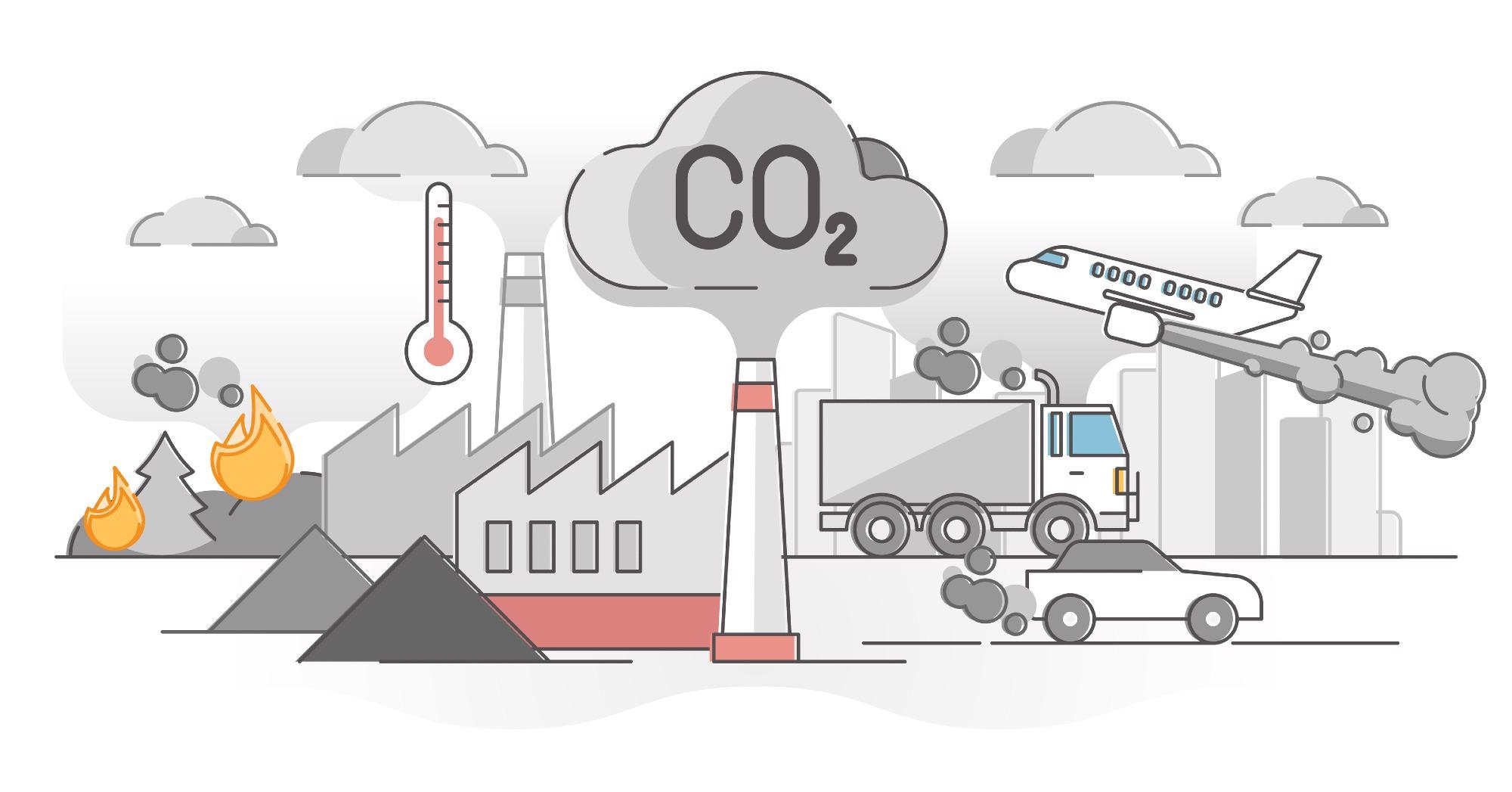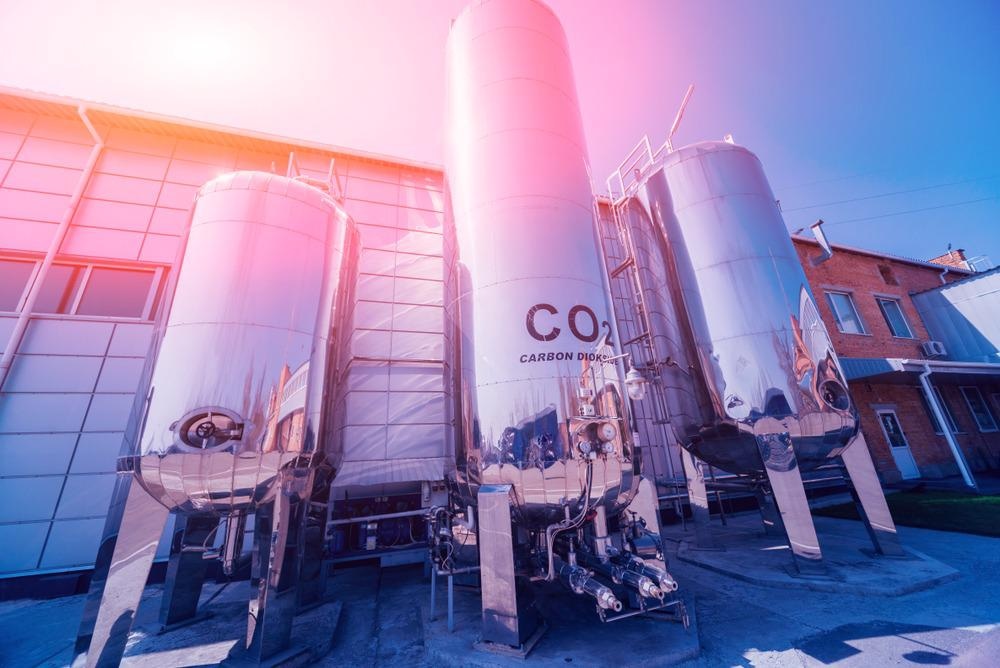This article focuses on the rise in CO2 emissions over the past decade and its current implications on the environment, and whether CO2 can be successfully converted into potential energy sources. A method that identifies metal catalysts that can convert CO2 into fuels like ethanol is explored in this article, shedding light on the challenges in scaling up industries for the conversion process and the road ahead.

Image Credit: VectorMine/Shutterstock.com
Current Effects and Implications of CO2 Emissions
By the 1950s, the world had already emitted over 6 billion tons of CO2, which increased the global ppm level to 300-310 ppm. By the 1990s, this number rose to four times, reaching 22 billion tons, with ppm levels around 340-370. Today, the world produces around 36 billion tons of CO2 each year, with ppm levels around 412-416.
The NOAA’s 2020 Annual Climate Report states that the combined land and ocean temperature has increased over an average rate of 0.13 degrees Fahrenheit every decade since the 1880s. This has led to the thawing of glacial masses, flooding of islands and coastal cities, a rise in devastating hurricanes, etc.
IPCC Editorial Series: Industrial Response to Climate Change
Therefore, the focus of researchers all around the world is to look for ways to reduce this carbon dioxide present in the atmosphere.
Can CO2 be Successfully Converted to Fuel or Other Substances?
Despite the increase in CO2 levels around the world, it has a lot of benefits if used in an effective manner.
Over the past couple of years, scientists have been trying to tap into the benefits of CO2 to be used or converted into a potential energy source. In recent years, NASA has been successful in using solar-powered, thin-film devices to convert CO2 into a usable fuel such as methane.
A Canadian company, Carbon Engineering, has developed a process to create liquid fuel by sucking in CO2 and combining it with hydrogen which is developed through the electrolysis of water using hydropower. The resultant liquid fuel that is obtained can be mixed with gasoline, diesel, and jet fuel.
The U.S. Department of Energy’s Argonne National Laboratory has developed a process that is a catalytic mechanism that uses a combination of CO2 and water and converts these into ethanol. This has given rise to different studies that are exploring different catalysts that can be used to convert CO2 into potential fuels.
Conversion of CO2 to Fuel Using a Single-Atom Catalyst
Researchers from the QUT’s Centre for Materials Science discovered through theoretical modeling that six metals, namely, nickel, niobium, palladium, rhenium, rhodium, and zirconium, can be used as effective catalysts to convert CO2 into clean energy sources.

Image Credit: Roman Zaiets/Sutterstock.com
The focus of the study was to observe how single atoms of metals would react to the two-dimensional pieces of “ferroelectric” materials. It was also found that reversing the polarization of the ferroelectric monolayer tuned the catalytic performance of CO2RR, and the degree of CO2 activation could be controlled.
The results of the study concluded that chemical fuel was obtained when an atom of a catalyst metal was added to the ferroelectric metal. Therefore, a robust and controlled CO2 generation method is created. Having a versatile set of metals acting as catalysts is also beneficial as it provides avenues for manufacturing plants to be set up anywhere where these metals are present.
The only but significant limitation is that these discoveries have been conducted in a controlled setting in a laboratory. Scaling this process for producing hundreds and thousands of barrels of fuel is a huge task that needs to be addressed to utilize the study that has been conducted. This would also require greater efforts from governments around the world.
Further Reading: Magnetic Ink Utilization in Recycling Efforts
According to Klaus Lackner from the Center for Negative Carbon Emissions, a trillion-dollar industry is required to be set up, which, although significant, is still smaller than the airline industry. Based on his research, Carbon Engineering is building a large plant that can support up to 200 barrels of fuel per day. The company is also planning to license its technology so that it can be used by other companies to set up sustainable plants.
The Road Ahead
All these efforts in converting CO2 into fuel indicate one purpose: reducing air pollution in the atmosphere. Cutting the CO2 level in the air and keeping it at permissible levels would lead to a lesser impact on the climate and would benefit the plant and animal life on earth. Therefore, it is critical for institutions all around the world to support the scaling up of such ideas.
References and Further Reading
Queensland University of Technology (n.d.). Catalysts found to convert carbon dioxide to fuel. [online] phys.org. Available at: https://phys.org/news/2021-10-catalysts-carbon-dioxide-fuel.html.
Ju, L., Tan, X., Mao, X., Gu, Y., Smith, S., Du, A., Chen, Z., Chen, C. and Kou, L. (2021). Controllable CO2 electrocatalytic reduction via ferroelectric switching on single atom anchored In2Se3 monolayer. Nature Communications, [online] 12(1), p.5128. Available at: https://www.nature.com/articles/s41467-021-25426-5 [Accessed 8 Oct. 2021].
Science. (2018). Carbon Engineering Makes Gasoline by Capturing Carbon Dioxide from the Air. [online] Available at: https://www.nationalgeographic.com/science/article/carbon-engineering-liquid-fuel-carbon-capture-neutral-science.
www.anl.gov. (n.d.). Turning carbon dioxide into liquid fuel | Argonne National Laboratory. [online] Available at: https://www.anl.gov/article/turning-carbon-dioxide-into-liquid-fuel.
Disclaimer: The views expressed here are those of the author expressed in their private capacity and do not necessarily represent the views of AZoM.com Limited T/A AZoNetwork the owner and operator of this website. This disclaimer forms part of the Terms and conditions of use of this website.